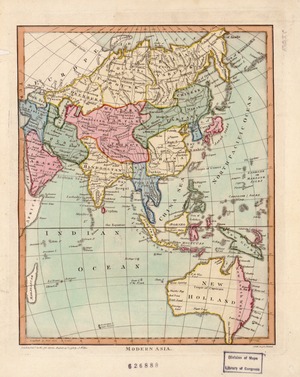Geography of Asia







== Geography of Asia ==

The Geography of Asia is diverse and expansive, covering a vast area of the Earth's surface. Asia is the largest and most populous continent, located primarily in the Eastern and Northern Hemispheres. It shares the continental landmass of Eurasia with the continent of Europe and the continental landmass of Afro-Eurasia with both Europe and Africa.
Physical Geography[edit]
Asia is characterized by a variety of geographical features, including mountains, deserts, rivers, and plains. The Himalayas, the world's highest mountain range, stretch across five countries: Bhutan, India, Nepal, China, and Pakistan. The highest peak, Mount Everest, is located in the Himalayas.
The continent also features vast deserts such as the Gobi Desert in Mongolia and northern China, and the Arabian Desert in the Middle East. Major rivers include the Yangtze River and the Yellow River in China, the Ganges and Indus in the Indian subcontinent, and the Tigris and Euphrates in the Middle East.
Climate[edit]
Asia's climate varies widely across its regions. The northern parts, including Siberia, experience extremely cold winters, while the southern regions, such as Southeast Asia, have tropical climates. The Indian subcontinent experiences a monsoon season, which brings heavy rains and is crucial for agriculture.
Political Geography[edit]
Asia is divided into several regions, each with its own distinct political and cultural characteristics. These regions include:
- East Asia: Includes countries like China, Japan, South Korea, and North Korea.
- Southeast Asia: Comprises nations such as Indonesia, Thailand, Vietnam, and Philippines.
- South Asia: Encompasses countries like India, Pakistan, Bangladesh, and Sri Lanka.
- Central Asia: Includes countries such as Kazakhstan, Uzbekistan, Turkmenistan, and Kyrgyzstan.
- Western Asia: Also known as the Middle East, includes countries like Saudi Arabia, Iran, Iraq, and Turkey.
Natural Resources[edit]
Asia is rich in natural resources, including oil, natural gas, minerals, and forests. The Middle East is particularly known for its vast oil reserves, while countries like China and India have significant coal deposits. The continent also has extensive agricultural lands, producing a variety of crops such as rice, wheat, and tea.
Environmental Issues[edit]
Asia faces several environmental challenges, including deforestation, air and water pollution, and the impacts of climate change. Rapid industrialization and urbanization have led to significant environmental degradation in many parts of the continent. Efforts are being made to address these issues through various environmental policies and international cooperation.
Related Pages[edit]
- Asia
- Himalayas
- Mount Everest
- Gobi Desert
- Yangtze River
- Indian subcontinent
- East Asia
- Southeast Asia
- South Asia
- Central Asia
- Western Asia
- Middle East
| Topics by Asian country | ||||||
|---|---|---|---|---|---|---|
|
| Topics by Asian country | ||||||
|---|---|---|---|---|---|---|
|
Ad. Transform your life with W8MD's Budget GLP-1 injections from $75


W8MD offers a medical weight loss program to lose weight in Philadelphia. Our physician-supervised medical weight loss provides:
- Weight loss injections in NYC (generic and brand names):
- Zepbound / Mounjaro, Wegovy / Ozempic, Saxenda
- Most insurances accepted or discounted self-pay rates. We will obtain insurance prior authorizations if needed.
- Generic GLP1 weight loss injections from $75 for the starting dose.
- Also offer prescription weight loss medications including Phentermine, Qsymia, Diethylpropion, Contrave etc.
NYC weight loss doctor appointmentsNYC weight loss doctor appointments
Start your NYC weight loss journey today at our NYC medical weight loss and Philadelphia medical weight loss clinics.
- Call 718-946-5500 to lose weight in NYC or for medical weight loss in Philadelphia 215-676-2334.
- Tags:NYC medical weight loss, Philadelphia lose weight Zepbound NYC, Budget GLP1 weight loss injections, Wegovy Philadelphia, Wegovy NYC, Philadelphia medical weight loss, Brookly weight loss and Wegovy NYC
|
WikiMD's Wellness Encyclopedia |
| Let Food Be Thy Medicine Medicine Thy Food - Hippocrates |
Medical Disclaimer: WikiMD is not a substitute for professional medical advice. The information on WikiMD is provided as an information resource only, may be incorrect, outdated or misleading, and is not to be used or relied on for any diagnostic or treatment purposes. Please consult your health care provider before making any healthcare decisions or for guidance about a specific medical condition. WikiMD expressly disclaims responsibility, and shall have no liability, for any damages, loss, injury, or liability whatsoever suffered as a result of your reliance on the information contained in this site. By visiting this site you agree to the foregoing terms and conditions, which may from time to time be changed or supplemented by WikiMD. If you do not agree to the foregoing terms and conditions, you should not enter or use this site. See full disclaimer.
Credits:Most images are courtesy of Wikimedia commons, and templates, categories Wikipedia, licensed under CC BY SA or similar.
Translate this page: - East Asian
中文,
日本,
한국어,
South Asian
हिन्दी,
தமிழ்,
తెలుగు,
Urdu,
ಕನ್ನಡ,
Southeast Asian
Indonesian,
Vietnamese,
Thai,
မြန်မာဘာသာ,
বাংলা
European
español,
Deutsch,
français,
Greek,
português do Brasil,
polski,
română,
русский,
Nederlands,
norsk,
svenska,
suomi,
Italian
Middle Eastern & African
عربى,
Turkish,
Persian,
Hebrew,
Afrikaans,
isiZulu,
Kiswahili,
Other
Bulgarian,
Hungarian,
Czech,
Swedish,
മലയാളം,
मराठी,
ਪੰਜਾਬੀ,
ગુજરાતી,
Portuguese,
Ukrainian
